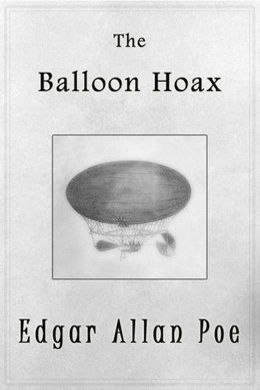
-
EPUB 78 KB
-
Kindle 97 KB
-
Support epubBooks by making a small $2.99 PayPal donation purchase.
Description
The Balloon-Hoax is the title now used for a newspaper article written by Edgar Allan Poe, first published in 1844. Originally presented as a true story, it detailed European Monck Mason’s trip across the Atlantic Ocean in only three days in a hot air balloon. It was later revealed as a hoax and the story was retracted two days later. Poe himself describes the enthusiasm his story had aroused: he claims that the Sun building was “besieged” by people wanting copies of the newspaper. “I never witnessed more intense excitement to get possession of a newspaper,” he wrote. The story’s impact reflects on the period’s infatuation with progress.
21 pages with a reading time of ~30 minutes (5360 words), and first published in 1844. This DRM-Free edition published by epubBooks, 2010.
Community Reviews
There are currently no other reviews for this book.
Excerpt
The great problem is at length solved! The air, as well as the earth and the ocean, has been subdued by science, and will become a common and convenient highway for mankind. The Atlantic has been actually crossed in a Balloon! and this too without difficulty–without any great apparent danger–with thorough control of the machine–and in the inconceivably brief period of seventy-five hours from shore to shore! By the energy of an agent at Charleston, S.C., we are enabled to be the first to furnish the public with a detailed account of this most extraordinary voyage, which was performed between Saturday, the 6th instant, at 11, A.M., and 2, P.M., on Tuesday, the 9th instant, by Sir Everard Bringhurst; Mr. Osborne, a nephew of Lord Bentinck’s; Mr. Monck Mason and Mr. Robert Holland, the well-known æronauts; Mr. Harrison Ainsworth, author of “Jack Sheppard,” &c.; and Mr. Henson, the projector of the late unsuccessful flying machine–with two seamen from Woolwich–in all, eight persons. The particulars furnished below may be relied on as authentic and accurate in every respect, as, with a slight exception, they are copied verbatim from the joint diaries of Mr. Monck Mason and Mr. Harrison Ainsworth, to whose politeness our agent is also indebted for much verbal information respecting the balloon itself, its construction, and other matters of interest. The only alteration in the MS. received, has been made for the purpose of throwing the hurried account of our agent, Mr. Forsyth, into a connected and intelligible form. THE BALLOON. Two very decided failures, of late–those of Mr. Henson and Sir George Cayley–had much weakened the public interest in the subject of aerial navigation. Mr. Henson’s scheme (which at first was considered very feasible even by men of science,) was founded upon the principle of an inclined plane, started from an eminence by an extrinsic force, applied and continued by the revolution of impinging vanes, in form and number resembling the vanes of a windmill. But, in all the experiments made with models at the Adelaide Gallery, it was found that the operation of these fans not only did not propel the machine, but actually impeded its flight. The only propelling force it ever exhibited, was the mere impetus acquired from the descent of the inclined plane; and this impetus carried the machine farther when the vanes were at rest, than when they were in motion–a fact which sufficiently demonstrates their inutility; and in the absence of the propelling, which was also the sustaining power, the whole fabric would necessarily descend. This consideration led Sir George Cayley to think only of adapting a propeller to some machine having of itself an independent power of support–in a word, to a balloon; the idea, however, being novel, or original, with Sir George, only so far as regards the mode of its application to practice. He exhibited a model of his invention at the Polytechnic Institution. The propelling principle, or power, was here, also, applied to interrupted surfaces, or vanes, put in revolution. These vanes were four in number, but were found entirely ineffectual in moving the balloon, or in aiding its ascending power. The whole project was thus a complete failure.
